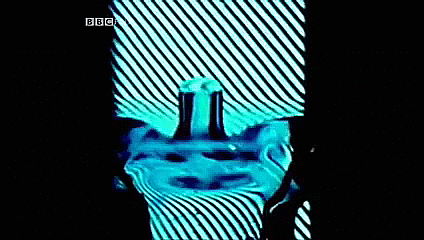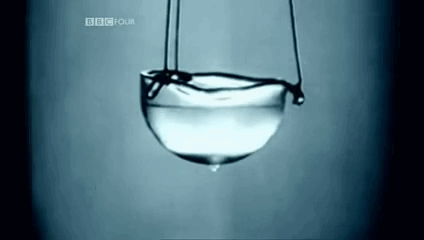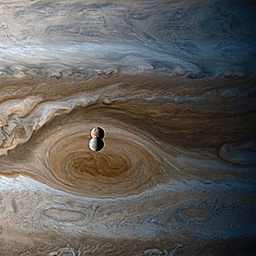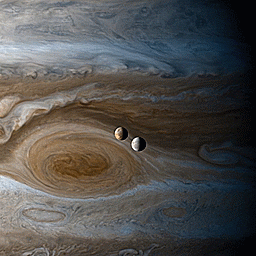What Is At The Center Of Our Galaxy?
What is at the center of our galaxy?
Here’s a very interesting question: What exactly is at the center of our galaxy? Is there a black hole ? How do we go about studying it?

A group of researchers from UCLA’s Galactic center group were inspired by the same question and decided to look at a region in the sky where they believed was the center of our milky way galaxy.
And this is what they found of the trajectories of stars surrounding the proposed center of the galaxy:

The star in the middle is the proposed center of our galaxy.These images were taken through the years 1996 - 2016 (see top right of gif).
The first thing that you notice about these stars is that they are orbiting a point in space. This is very similar of how planets in our solar system are orbiting the sun.

Source
One of the special stars in that animation is S0-2 which completes its elliptical orbit in only 15 years!
( it takes the sun approximately 225-250 million years to complete one journey around the galaxy’s center )

But having this knowledge of how small the orbit is, we can use Kepler’s law to find out the Mass at the center of the galaxy:

And we get the mass of the center as a staggering 4 million times the mass of the Sun.
Let’s take a look at the orbits once again:

The radius of this object at the center, in order to avoid collision with the rest of the objects has to be about the diameter of Uranus’s orbit.
So, an object that has 4 million times the mass of the Sun. and diameter of Uranus’s orbit .. Hmm.. The only astronomical object that would fit this characteristic is a Super Massive Black Hole (SMBH)
And that’s why we believe that at the center of our galaxy is a SMBH.

Hope you guys liked this post. Have a good one!
* This is how the actual data of the stars orbiting this apparent black hole looks like:

**(Lecture) Dr. Andrea M. Ghez “The Monster at the Heart of Our Galaxy”
*** (TED Talk) Andrea Ghez: The hunt for a supermassive black hole
All images/animations featured in this post were created by Prof. Andrea Ghez and her research team at UCLA and are from data sets obtained with the W. M. Keck Telescopes
More Posts from Riekod and Others

Drops that impact a very hot surface will surf on their own vapor, and ones that hit a very cold surface will freeze almost immediately. But what happens when the temperature differences aren’t so extreme? Scientists explored this (above) by dropping room-temperature water droplets onto a cool surface – one warmer than the freezing point but cooler than the dew point at which water condenses.
They found that impacting drops formed a triple halo of condensate (right). The first and brightest ring forms at the radius of the drop’s maximum extent during impact. The second band forms from water vapor that leaves the droplet at impact. As that vapor cools, it condenses into a second band. The final, dimmest band forms as the droplet stabilizes and cools. It’s the result of water vapor near the droplet continuing to cool and condense. (Image and research credit: Y. Zhao et al.; via Nature News; submitted by Kam-Yung Soh)


Superfluidity consists of an anomalous liquid state of quantum nature which is under a very low temperature behaving as if it had no viscosity and exhibiting an abnormally high heat transfer. This phenomenon was observed for the first time in liquid helium and has applications not only in theories about liquid helium but also in astrophysics and theories of quantum gravitation.
Helium only ends boiling at 2.2 K and is when it becomes helium-II (superfluid helium), getting a thermal conductivity increased by a million times, in addition to becoming a superconductor. Its viscosity tends to zero, hence, if the liquid were placed in a cubic container it would spread all over the surface. Thus, the liquid can flow upwards, up the walls of the container. If the viscosity is zero, the flexibility of the material is non-existent and the propagation of waves on the material occurs under infinite velocity.

Because it is a noble gas, helium exhibits little intermolecular interaction. The interactions that it presents are the interactions of Van der Waals. As the relative intensity of these forces is small, and the mass of the two isotopes of helium is small, the quantum effects, usually disguised under the thermal agitation, begin to appear, leaving the liquid in a state in which the particles behave jointly, under effect of a single wave function. In the two liquids in which cases of superfluidity are known, that is, in isotopes 3 and 4 of helium, the first is composed of fermions whereas the second is composed of bosons. In both cases, the explanation requires the existence of bosons. In the case of helium-3, the fermions group in pairs, similar to what happens in the superconductivity with the Cooper pairs, to form bosons.

Helium’s liquidity at low temperatures allows it to carry out a transformation called Bose–Einstein condensation, in which individual particles overlap until they behave like one big particle.
Superfluid in astrophysics
The idea of superfluids existed within neutron stars was proposed by Russian physicist Arkady Migdal in 1959. Making an analogy with Cooper pairs that form within superconductors, it is expected that protons and neutrons in the nucleus of a star of neutrons with sufficient high pressure and low temperature behave in a similar way forming pairs of Cooper and generate the phenomena of superfluidity and superconductivity.

The existence of this phenomenon was proven by NASA in 2011 when analyzing the neutron star left by supernova Cassiopeia A.
sources: 1, 2, 3 & 4 animation: 1 & 2

The First Real Photo Of Entire Earth From Apollo 8 In 1968.

Omega Centauri.
Credit: Maicon Germiniani

A view you’d see from an asteroid’s surface!
Japan’s space agency (JAXA) has successfully landed two small rovers on the asteroid Ryugu. Their “mothership” Hayabusa 2 reached the asteroid in summer at a distance of 313 million km (194 million miles) from Earth, a journey which took 3.5 years. Rover-1B captured this video of 15 frames on September 23, 2018.
Another spectacular sight was the Hayabusa 2 spacecraft’s shadow visible on the surface before releasing the rovers:

The mission’s goal is to study this potentially hazardous asteroid, and bring back a sample in 2020! Asteroids are not only space rocks that might collide with our planet, though. They are remnants from our solar system’s formation and help to investigate the origin of life and the Earth’s oceans.
⭐ Stay connected with Sci-universe on Tumblr and Instagram 📸: JAXA / Roman Tkachenko via @haya2e_jaxa










Credit: NASA/ESA/Hubble Space Telescope
While we’re waiting for some hopefully good news that the amazing instrument is returning to service (down since October 5 due to a gyro dyfugalty) here are some of the Hubble Space Telescope’s top pics.


One of the challenges in studying tornadoes is being in the right place at the right time. In that regard, storm chaser Brandon Clement hit the jackpot earlier this week when he captured this footage of a tornado near Sulphur, Oklahoma from his drone. He was able to follow the twister for several minutes until it apparently dissipated.
Scientists are still uncertain exactly how tornadoes form, but they’ve learned to recognize the key ingredients. A strong variation of wind speed with altitude can create a horizontally-oriented vortex, which a localized updraft of warm, moist air can lift and rotate to vertical, birthing a tornado. These storms most commonly occur in the central U.S. and Canada during springtime, and researchers are actively pursing new ways to predict and track tornadoes, including microphone arrays capable of locating them before they fully form. (Image and video credit: B. Clement; via Earther)



Created using still images taken by the Cassini spacecraft during it’s flyby of Jupiter and while at Saturn. Shown is Io and Europa over Jupiter’s Great Red Spot.
NASA/JPL-Caltech/SSI/CICLOPS/Kevin M. Gill
-
 2xsworld reblogged this · 3 years ago
2xsworld reblogged this · 3 years ago -
 2xsworld liked this · 3 years ago
2xsworld liked this · 3 years ago -
 reginaldhubbub-deactivated liked this · 3 years ago
reginaldhubbub-deactivated liked this · 3 years ago -
 pltuo liked this · 5 years ago
pltuo liked this · 5 years ago -
 assathor liked this · 5 years ago
assathor liked this · 5 years ago -
 aevophotography-blog liked this · 5 years ago
aevophotography-blog liked this · 5 years ago -
 xian404 reblogged this · 5 years ago
xian404 reblogged this · 5 years ago -
 rasthan liked this · 5 years ago
rasthan liked this · 5 years ago -
 barettapr reblogged this · 5 years ago
barettapr reblogged this · 5 years ago -
 barettapr liked this · 5 years ago
barettapr liked this · 5 years ago -
 lostinthemindseye liked this · 6 years ago
lostinthemindseye liked this · 6 years ago -
 laszlomann liked this · 6 years ago
laszlomann liked this · 6 years ago -
 lorenzens-soil liked this · 6 years ago
lorenzens-soil liked this · 6 years ago -
 mysteriouslyshadowyangel liked this · 6 years ago
mysteriouslyshadowyangel liked this · 6 years ago -
 didyousaydragons liked this · 6 years ago
didyousaydragons liked this · 6 years ago -
 andromedasaganx reblogged this · 6 years ago
andromedasaganx reblogged this · 6 years ago -
 atrosanguineus liked this · 6 years ago
atrosanguineus liked this · 6 years ago -
 zotinha456 liked this · 6 years ago
zotinha456 liked this · 6 years ago -
 cavemanfeet liked this · 6 years ago
cavemanfeet liked this · 6 years ago